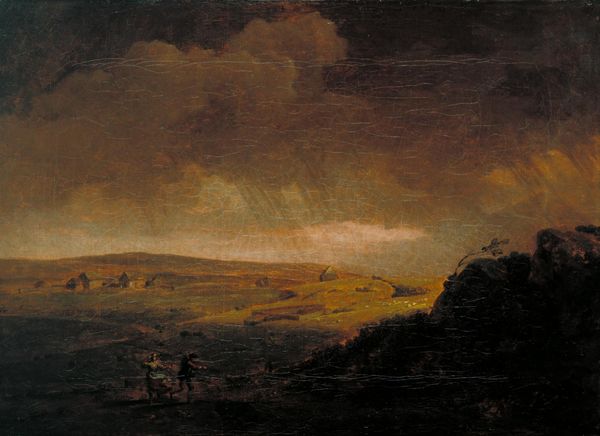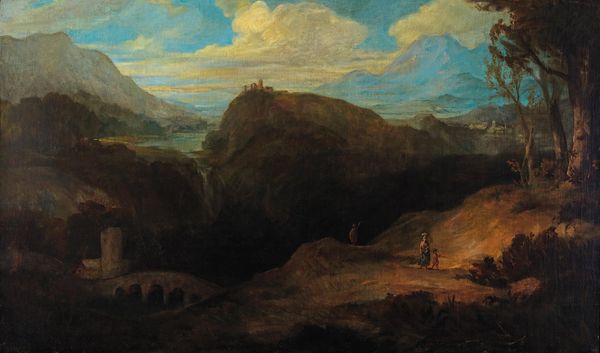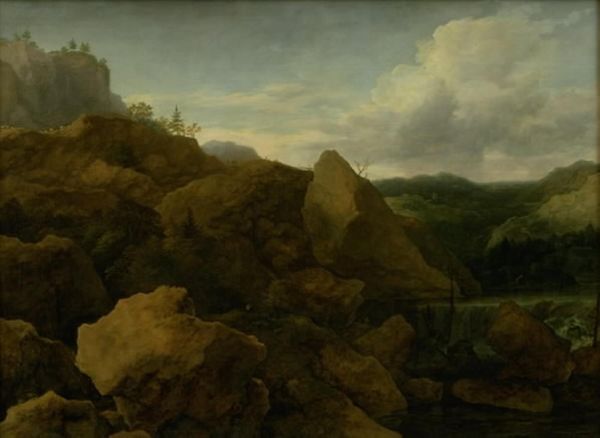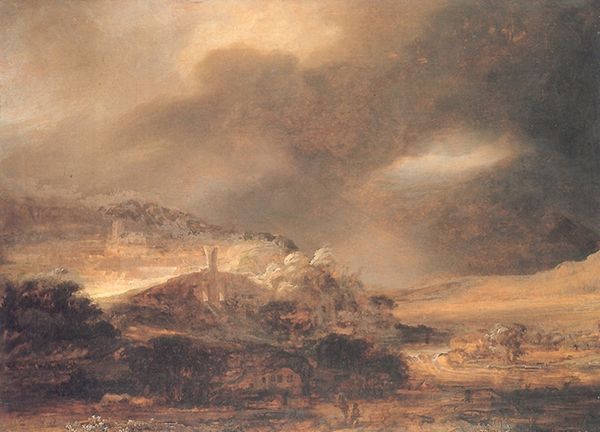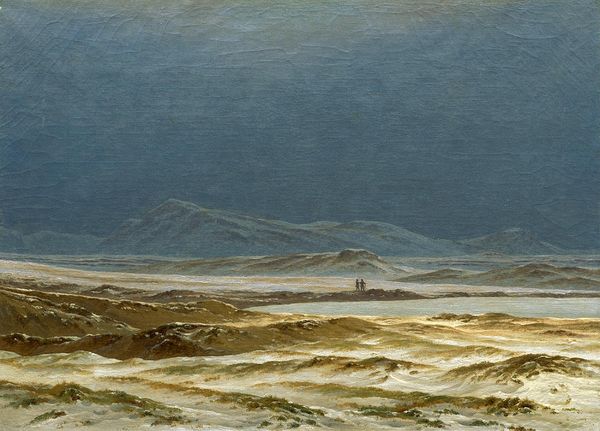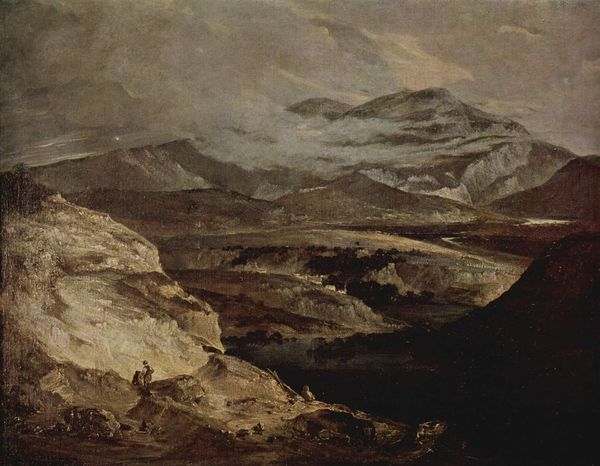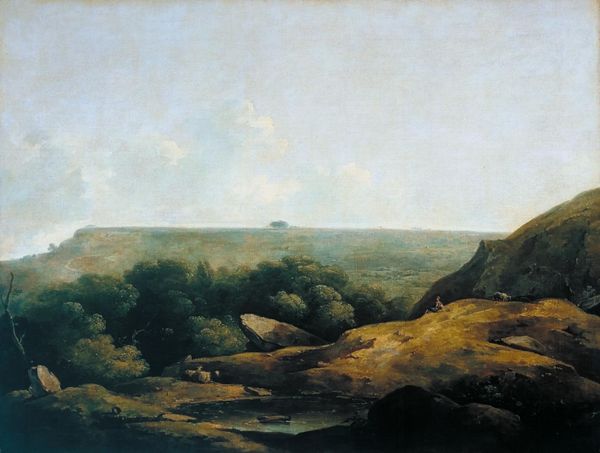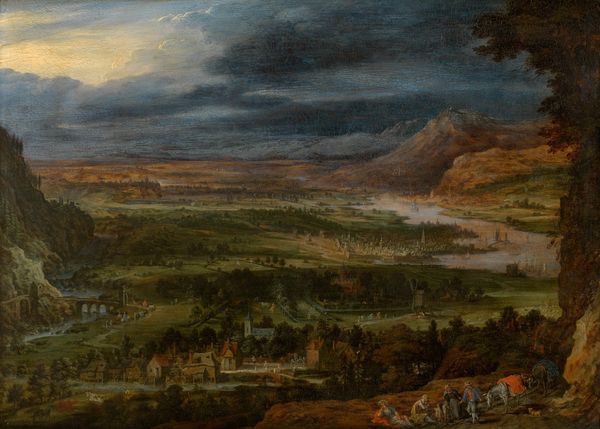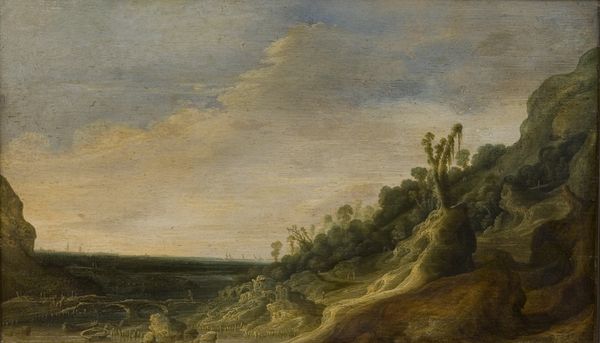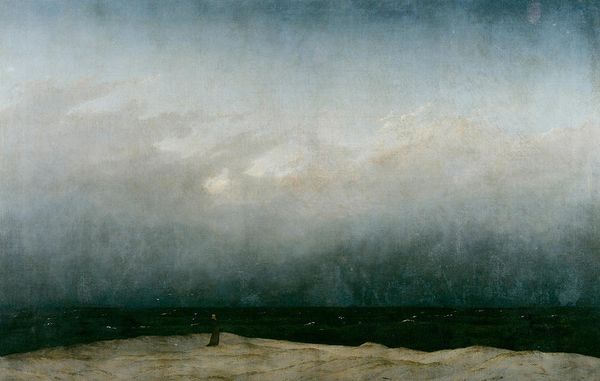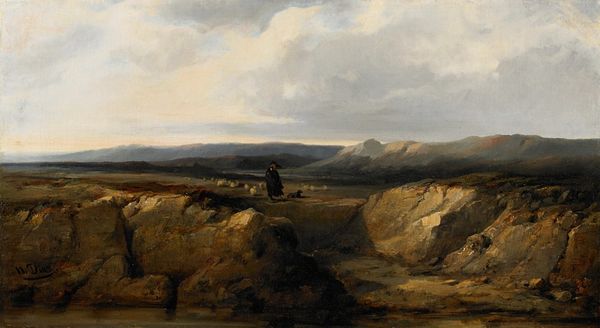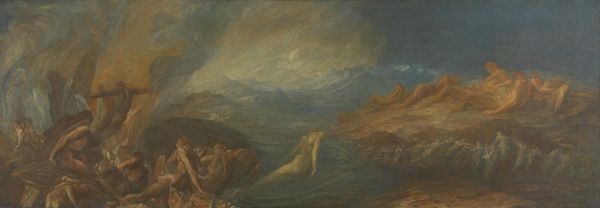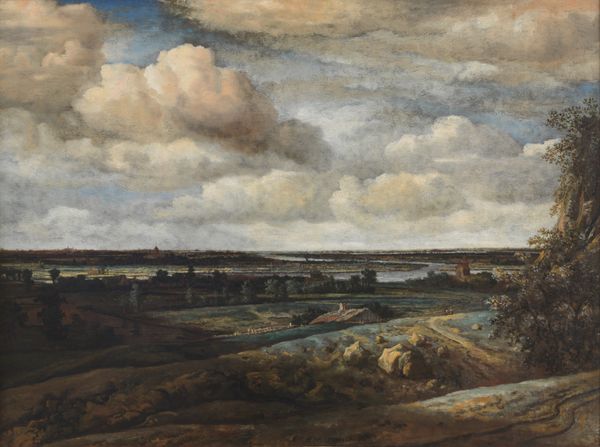
painting, oil-paint
#
baroque
#
painting
#
oil-paint
#
landscape
#
oil painting
#
genre-painting
Dimensions: height 28.7 cm, width 52.4 cm, height 37 cm, width 60.5 cm, thickness 3.5 cm
Copyright: Rijks Museum: Open Domain
Curator: This compelling oil painting, dating roughly from 1615 to 1625, is titled "Panoramic Landscape with Tobias and the Angel" and attributed to Kerstiaen de Keuninck. Editor: It's immediately striking. Gloomy, dramatic… all that textured earth and brooding sky. I am curious what the support is; you can practically feel the layers of earth and oil paint built upon the canvas. Curator: De Keuninck specialized in these imaginative, expansive landscapes. Note the tiny figures in the lower left corner; that's the biblical story of Tobias and the Angel, practically swallowed up by the grandeur of the landscape. It speaks to a kind of… insignificance, almost. Editor: Right. It reminds me that oil paints became widely used and commercially available in the Low Countries around this period. Did de Keuninck's workshop produce their own paints or buy them ready-made? I mean, the intensity of the pigments… that was dependent on trade routes, grinding techniques. Curator: Absolutely. And consider the symbolism. The angel Raphael guides Tobias on his journey; a journey represents more than the physical--it signifies inner transformation, spiritual seeking. The vast landscape could then become a representation of all the trials and tribulations on the path to salvation. Editor: And think about the social status implied. Someone commissioned this, right? They had the resources for the materials themselves: expensive pigments and linen canvases stretched and primed. They would need space for displaying art on this scale as well. Who would consume and contemplate these? Curator: Patrons from wealthy merchant families and nobility desired to depict this world to gain and preserve status, for sure. These works often served as vehicles of self-affirmation in Baroque society, while suggesting at a religious morality that justified the consumption of the painting in the first place. Editor: Precisely. It brings to the fore questions around production, ownership, value—tangible and symbolic—all wrapped up in a beautiful, if somewhat melancholic, painting. Curator: Indeed. And, looking closer at the material manifestation of faith that is revealed through landscape, we see not just beauty, but an encapsulation of humanity's perennial quest for something higher in being represented. Editor: Right, that material reality underscores even the most transcendent intentions. Fascinating how both come together.
Comments
No comments
Be the first to comment and join the conversation on the ultimate creative platform.

